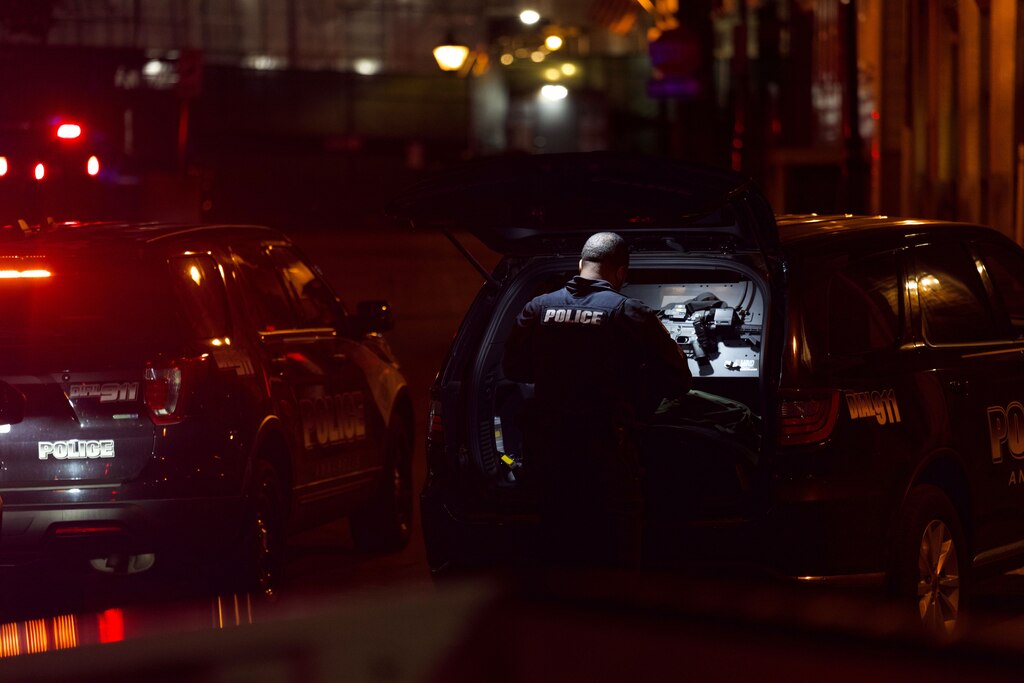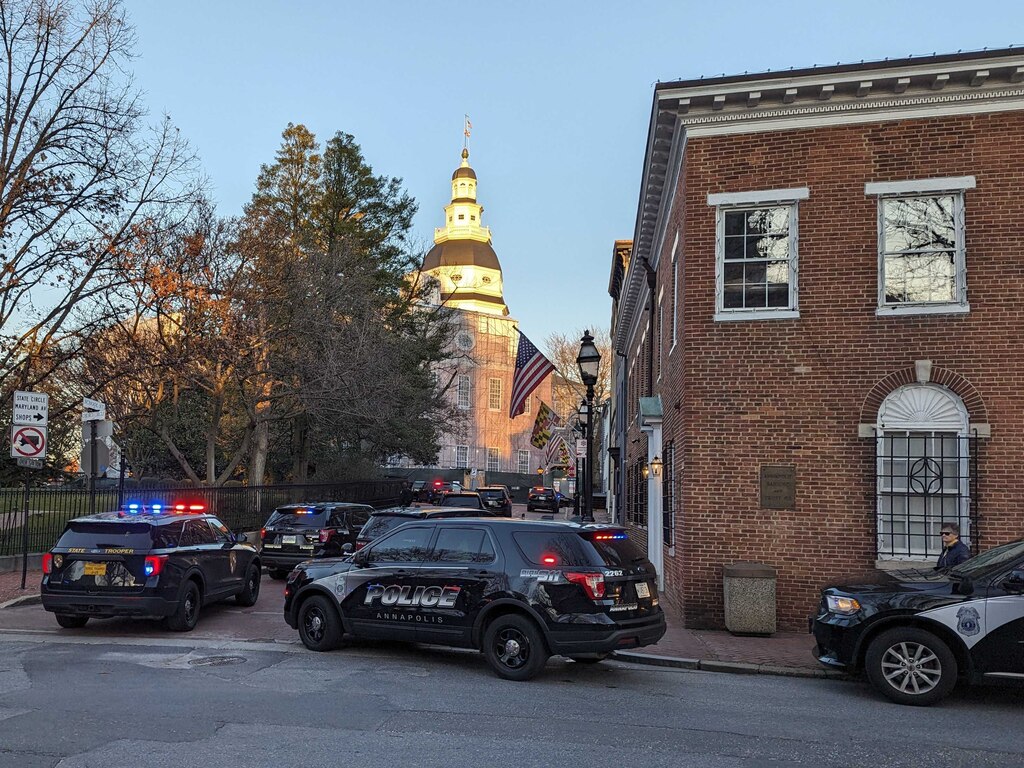Unidentified callers phoning fake threats of violence to 911 have launched massive police responses in recent months to the homes of prominent political figures and state capitol buildings, including last week in Annapolis.
The dangerous hoax, known as “swatting,” is meant to draw a heavily armed police presence — often SWAT teams — to a specific location to intimidate or harass innocent people, and has been increasingly used against political figures.
A presidential candidate, members of Congress, judges, a federal prosecutor and a secretary of state have all been victims of swatting. Buildings where politicians work have also been targeted.
Authorities responded to spurious threats at more than a dozen state capitol buildings on Jan. 3, including Maryland, according to The Washington Post. The calls shuttered buildings and stopped state business though no explosives were found and no one was hurt.
In Annapolis, a male caller told police he was armed and on his way to the capitol building to “shoot everyone” he saw, according to Annapolis Police. The alarm ignited a militarized response from three agencies as teams of officers with guns drawn searched for a threat and evacuated civilians from the three-floor building, shutting down the legislative campus for two hours until it was deemed clear hours later.
Making a “false statement, report or complaint of an emergency or a crime” to police or other emergency officials is a misdemeanor in Maryland, punishable by up to three years in prison and a fine. Penalties increase if a law enforcement response causes anyone’s death or serious physical injury.
So far, Maryland Capitol Police, the lead law enforcement agency, has not said whether they are investigating the incident as a crime of swatting, according to a spokesperson. However, security experts who study the phenomenon say the ordeal had all the makings of a swatting.

“The idea is to get a large response,” said Lauren R. Shapiro, an associate professor at the John Jay College of Criminal Justice who teaches security. She said swatting calls can be initiated by individuals or groups and are increasingly weaponized against people with opposing political viewpoints.
One day after Secretary of State Shenna Bellows barred Republican presidential candidate Donald Trump from Maine’s ballot, a false report of a break-in sent police to her then-unoccupied home. Twice, individuals called 911 to falsely report shootings at the home of presidential candidate and former South Carolina governor, Nikki Haley.
Around the Christmas holiday, authorities received a slew of swatting calls targeting political figures and high-profile government officials, including several Republican members of Congress and special counsel Jack Smith, the federal prosecutor responsible for investigating Trump’s role in the Jan. 6, 2021 insurrection and his possession of classified documents.
Shapiro described swattings as “terrifying” events not just for the victims, but also for police who arrive at the scene on high-alert prepared to face a fatal threat. In addition to the psychological toll, there’s an economic impact from a false alarm like the one in Annapolis.
Shapiro estimated such an event could possibly cost tens of thousands of dollars in government resources, and surrounding businesses can lose out if they’re forced to close while police search for trouble. Additional financial and human resources will be spent investigating the event, too, she said.
Swatting is spreading
“What we’re seeing is the proliferation of a technique,” said Greg Winger, assistant professor of cybersecurity and U.S. foreign policy at the University of Cincinnati.
Winger describes himself as a “traditional political scientist” who’s focused on the connection between international conflict and security. He said politically motivated swatting is the result of typical political discord migrating into the digital world.
And just like other online trends, it’s spreading, and the attacks are becoming more sophisticated, he said.
It’s not uncommon for callers to use digital technologies that can hide locations and disguise voices, making it hard for authorities to track them. And swatting-for-service can be bought via subversive internet communities or encrypted messaging channels and even paid for with cryptocurrency, he said.
Making fake emergency calls more concerning is the credible threat of mass shootings and community violence that have become commonplace in American life.
Swatting is not unique to this country, Winger said, “but it is uniquely dangerous in the United States, given the prevalence of firearms, the active shooter response and the heavily militarized police response.”
Maryland outlawed swatting
Maryland lawmakers had tried for years to attack the issue of swatting and united their efforts to pass a bill last year, making it a criminal offense punishable by prison time and fines. There is no federal law specific to swatting.
Sen. Cheryl Kagan, one of the bill’s lead sponsors, told colleagues last year that it was time to be serious about swatting.
”Swatting is a crime and in Maryland, we don’t treat it enough as such. There is a crisis,” said Kagan, a Montgomery County Democrat. “When people call in fake emergencies or fake shooting reports, it results in a massive police presence that turns out to be unnecessary,” she said.
“It is a waste of resources, it is terrifying,” she said.

What we know about Annapolis
Annapolis Police, Maryland State Police and the FBI are assisting the Maryland Capitol Police with the investigation, according to a spokesperson for the Maryland Capitol Police.
“Individuals found responsible for making threats in violation of state and/or federal laws will be prosecuted,” an FBI spokesperson said in a statement.
Meanwhile, lawmakers have signed a contract for an emergency text alert system that could warn people in and around the State House of security threats. The system could be up and operational within the next few weeks.
Baltimore Banner reporter Tim Prudente contributed reporting.



Comments
Welcome to The Banner's subscriber-only commenting community. Please review our community guidelines.